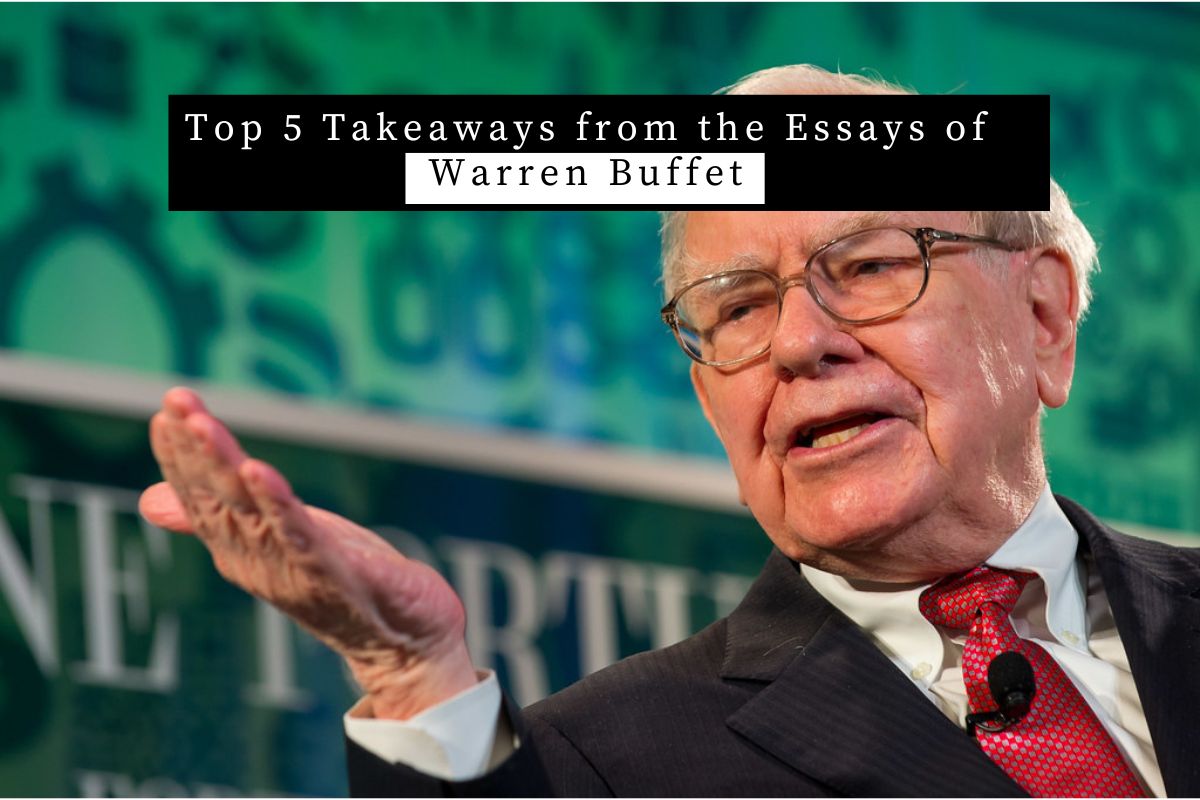Warren Buffett is widely regarded as the most successful investor of all time, with an estimated net worth of $82.5 billion. While he has never written a book on his investing approach, he has shared his thoughts on businesses and investing annually in his shareholder letter to Berkshire Hathaway owners. Lawrence A. Cunningham has compiled these letters into a book, The Essays of Warren Buffett, co-written with Buffett himself. In this article, we will explore five key takeaways from the book that we can use to improve our own investing strategies.
Table of Contents
ToggleBuy Outstanding Businesses at Sensible Prices
Buffett’s primary goal in investing is to find an outstanding business at a sensible price, rather than a mediocre business at a bargain price. He argues that investing in “frog-like” businesses may be cheap, but it will take a lot of them before one of them turns into a “prince.” Instead, it is better to search for “prince-like” businesses that can be acquired at a reasonable price. Although many of Buffett’s investment principles were derived from Benjamin Graham’s “value investing” approach, they had different opinions when it came to buying cheap businesses. Graham preferred buying at bargain prices, whereas Buffett believed that over time, investing in great businesses that reinvest their profits to compound the returns of shareholders was a better strategy, even if the price was slightly higher.
Look for a High Return on Capital
Buffett recommends looking for businesses with a high return on net tangible assets. This means companies that earn a lot of money on the things they own, minus intangibles like patents and goodwill, and liabilities. Joel Greenblatt’s book, The Little Book That Beats the Market, covers the same approach. Buffett further adds that you want a company that can keep adding more capital and continue to earn an above-average return. This is achieved by investing in businesses that have a wide “moat.”
Invest in Businesses with a Wide “Moat”
A wide “moat” is a characteristic of a business that makes it difficult or nearly impossible for competitors to steal parts of the market. For instance, a lemonade stand may have a superior secret recipe, really low operating costs, or some special ingredient that makes customers addicted to the product. A business with a high return on capital, where additional capital can be employed to produce cash at high rates in the future, and which is protected by a wide moat, is what Buffett wants to see. He believes that extending a competitive advantage and widening the moat is even more important than the current year’s return on capital.
Invest in Superior Economic Prospects
Buffett also recommends investing in businesses with superior economic prospects. This means investing in companies that are expected to grow faster than the overall economy. It is vital to identify companies that are likely to experience exponential growth, either through developing new products, expanding their market share, or entering new markets.
Look for Companies with Extraordinary People in Charge
Buffett also insists on investing in businesses with extraordinary people in charge. He believes that great management is essential to the success of any business. Thus, investing in businesses with competent and ethical leaders who make rational decisions is a vital consideration.
Conclusion
Warren Buffett’s investment philosophy is based on buying outstanding businesses at sensible prices, investing in businesses with a high return on capital and a wide moat, superior economic prospects, and investing in companies with extraordinary people in charge. As investors, we can learn a lot from his approach to investing, which has been time-tested and proven successful over several decades. While there is no guarantee that these strategies will work for everyone, they provide an excellent starting point for those looking to improve their investment portfolios.
Further Reading and Sources:
Berkshire Hathaway Letters to Shareholders 1965-2021
Additional Resources
To keep learning and advancing your career, we highly recommend these additional resources:
Warren Buffett’s Road to Success: How A Paperboy Became A Billionaire Investor
7 Financial Models Used by Investment Bankers












